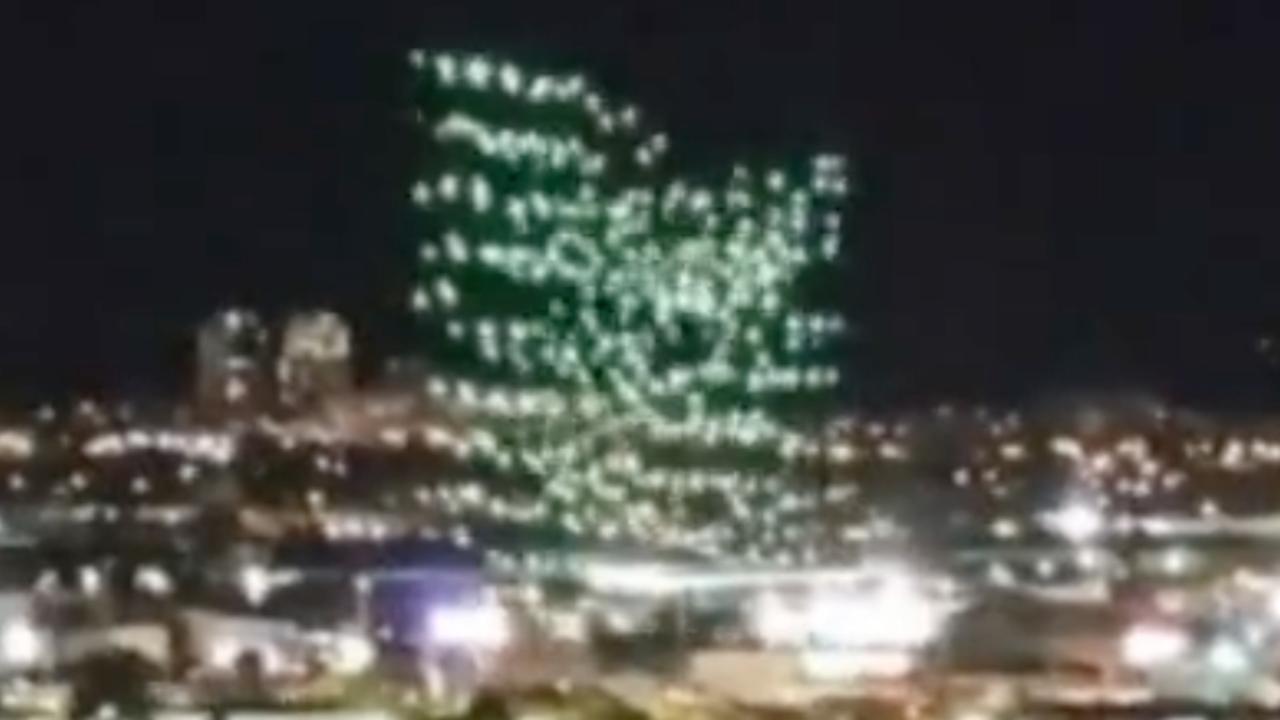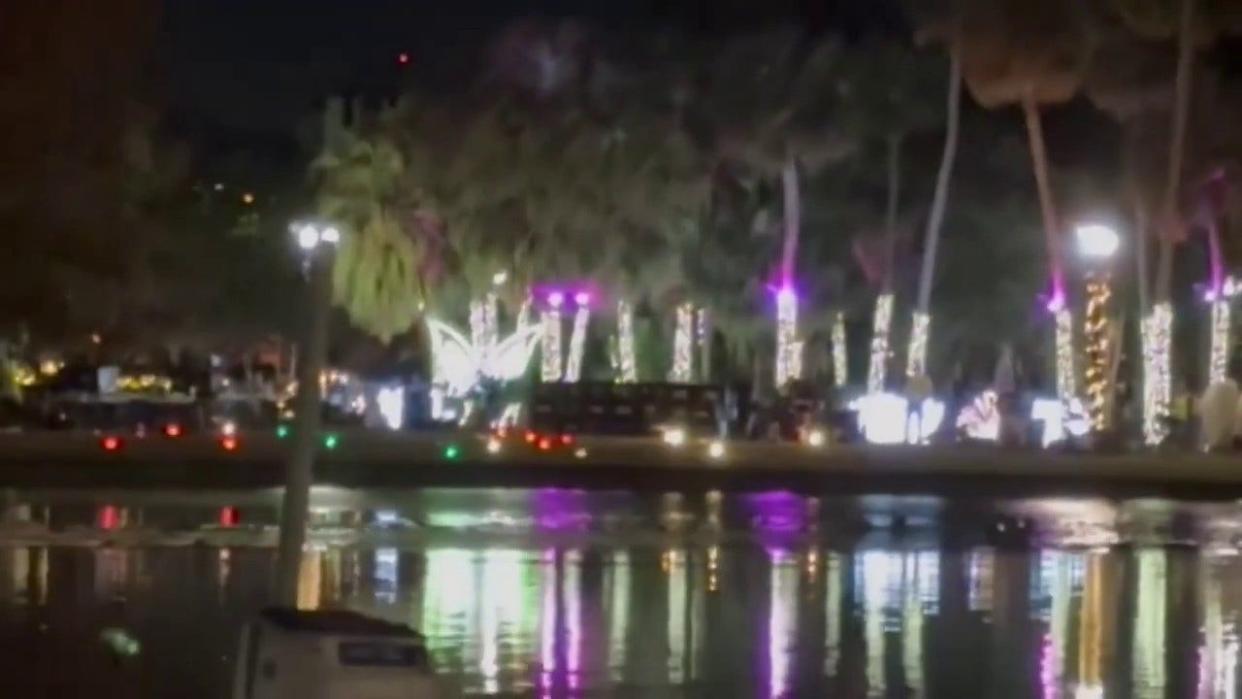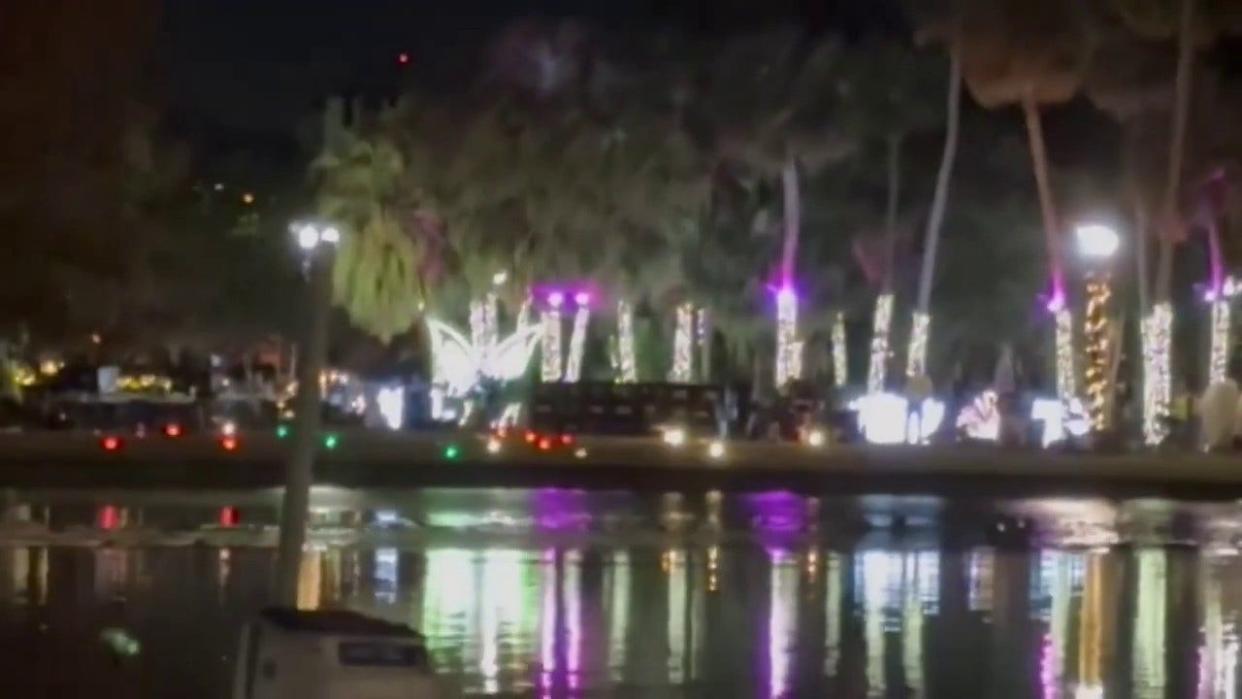Orlando drone show malfunction captivated audiences and sparked widespread discussion. This incident serves as a stark reminder of the technological complexities and potential safety concerns inherent in large-scale drone displays. We will delve into the sequence of events, exploring the technical aspects of the malfunction, its impact on spectators and public perception, and the resulting regulatory and safety implications.
Finally, we’ll examine technological advancements that could prevent similar occurrences in the future.
The unexpected failure highlighted vulnerabilities in current safety protocols and spurred crucial conversations about the need for enhanced technological safeguards and stricter regulatory oversight in the burgeoning field of drone entertainment. The incident’s impact extended beyond immediate spectators, influencing public perception of drone technology and its suitability for large-scale public events.
The Orlando Drone Show Malfunction
The recent drone show malfunction in Orlando, Florida, serves as a stark reminder of the inherent risks associated with large-scale drone displays. While drone shows offer a spectacular visual experience, the intricate coordination and technological reliance make them susceptible to unforeseen issues. This incident necessitates a thorough examination of the events, the underlying technical aspects, its impact, and the implications for future shows.
The Orlando Drone Show Incident: A Detailed Account

The Orlando drone show, scheduled for [Insert Date], involved [Insert Number] drones programmed to create a captivating aerial display. The initial stages of the show proceeded without incident, with the drones executing their programmed routines flawlessly. However, at approximately [Insert Time], a significant malfunction occurred. [Describe the sequence of events leading to the malfunction, e.g., a cluster of drones began to deviate from their programmed flight paths, losing synchronization with the others.
Some drones began to descend erratically, while others appeared to lose altitude control]. The exact cause of the malfunction remains under investigation, but initial reports suggest [Insert Initial Suspected Cause, e.g., a software glitch affecting multiple drones simultaneously]. The show was immediately halted, and the remaining drones were guided to a safe landing. Audience members reported a mix of surprise, concern, and even some minor panic as the drones malfunctioned.
The Orlando drone show malfunction sparked concerns about safety protocols, highlighting the potential for technical failures in large-scale drone displays. This incident prompts reflection on similar events, such as the one detailed in this report on a florida drone accident , which underscores the importance of robust regulations and maintenance. Ultimately, the Orlando malfunction serves as a reminder of the need for continuous improvement in drone technology and operational safety.
Technical Aspects of the Malfunction
Several factors could have contributed to the Orlando drone show malfunction. These include potential software glitches in the central control system, hardware failures within individual drones (e.g., GPS module failure, motor malfunction), or even unforeseen environmental conditions like strong winds or electromagnetic interference. While precise details are pending a full investigation, it’s crucial to assess the adequacy of existing safety protocols.
The incident highlights the need for robust redundancy systems and fail-safe mechanisms to mitigate the impact of individual component failures. The investigation will need to determine whether existing safety protocols were correctly implemented and if they were sufficient to prevent or mitigate the extent of the malfunction.
| Incident Location | Date | Malfunction Type | Outcome |
|---|---|---|---|
| [Location 1, e.g., Las Vegas, Nevada] | [Date 1, e.g., October 26, 2022] | [Malfunction Type 1, e.g., Software Glitch] | [Outcome 1, e.g., Partial show cancellation, no injuries] |
| [Location 2, e.g., Dubai, UAE] | [Date 2, e.g., December 15, 2021] | [Malfunction Type 2, e.g., Hardware Failure] | [Outcome 2, e.g., Minor damage to property, no injuries] |
| [Location 3, e.g., Sydney, Australia] | [Date 3, e.g., January 10, 2023] | [Malfunction Type 3, e.g., Weather-related malfunction] | [Outcome 3, e.g., Show postponed, no injuries] |
Impact on Spectators and Public Perception, Orlando drone show malfunction

While no serious injuries were reported following the Orlando drone show malfunction, several spectators expressed concerns about the safety of such large-scale events. The immediate impact on the organizers’ reputation was negative, with social media flooded with videos and comments expressing surprise and disappointment. News outlets reported the event prominently, leading to widespread public discussion about the safety and reliability of drone shows.
Long-term, the incident could affect public trust in drone show organizers, potentially impacting ticket sales and future event bookings unless appropriate measures are taken to rebuild confidence.
Regulatory and Safety Implications

Existing regulations governing drone shows vary across jurisdictions, but generally focus on aspects like licensing, airspace restrictions, and operational safety procedures. The Orlando incident underscores the need for stricter regulations and improved safety protocols. A thorough review of current regulations is necessary, potentially incorporating stricter requirements for redundancy systems, real-time monitoring, and emergency response plans.
- Implement mandatory redundancy systems in drone control software and hardware.
- Enforce stricter pre-flight checks and maintenance procedures for all drones.
- Develop advanced real-time monitoring systems to detect and address potential malfunctions promptly.
- Establish clear emergency protocols for handling malfunctions, including procedures for safe drone landing and audience evacuation.
- Require comprehensive risk assessments before each drone show.
Technological Advancements and Future of Drone Shows
Technological advancements can significantly enhance the safety and reliability of future drone shows. Redundancy systems, improved GPS technology with fail-safes, and advanced obstacle avoidance systems are crucial. Furthermore, incorporating artificial intelligence for real-time anomaly detection and autonomous response mechanisms can mitigate the risk of malfunctions. The long-term impact of the Orlando incident on the future of drone shows depends on the industry’s response.
A commitment to implementing enhanced safety protocols and fostering public trust will be essential for the continued growth and acceptance of this emerging entertainment technology.
A hypothetical improved drone control system could feature a modular design with multiple independent control units, each with its own GPS and communication systems. The user interface would provide real-time monitoring of all drones, displaying their positions, battery levels, and operational status. Advanced algorithms would continuously analyze data, detecting anomalies and triggering appropriate fail-safes. The system would also include a comprehensive error handling system, automatically adjusting flight parameters or initiating emergency landing procedures if necessary.
This enhanced system would significantly improve the safety and reliability of drone shows, addressing many of the shortcomings highlighted by the Orlando incident.
The Orlando drone show malfunction serves as a pivotal case study, underscoring the critical need for robust safety protocols and technological advancements in the drone entertainment industry. While the immediate aftermath involved addressing public concerns and assessing the incident’s impact, the long-term implications involve refining existing regulations, integrating advanced technologies to prevent future malfunctions, and rebuilding public trust. The incident should catalyze a proactive approach to safety, leading to more reliable and secure drone shows for years to come.
Further research and collaborative efforts between industry stakeholders and regulatory bodies are vital to ensuring the responsible and safe development of this exciting technology.
General Inquiries: Orlando Drone Show Malfunction
What type of drones were used in the Orlando show?
This information would need to be sourced from news reports or official statements regarding the specific drone show.
The recent Orlando drone show malfunction highlights the complexities of large-scale aerial displays. Such incidents underscore the need for robust safety protocols, a need further emphasized when considering the technological advancements in remote surveillance, such as the impressive capabilities showcased by the cobequid pass camera. This technology, while unrelated to entertainment, presents similar challenges in terms of reliable operation and data management, issues equally relevant to preventing future Orlando-style malfunctions.
Were there any injuries reported beyond minor concerns?
The recent Orlando drone show malfunction highlights the complexities of large-scale aerial displays. Such incidents underscore the need for robust safety protocols and reliable technology, a need perhaps mirrored in the sophisticated surveillance capabilities of systems like the cobequid pass camera , which requires equally dependable performance for its intended purpose. Ultimately, both situations demonstrate the importance of consistent monitoring and preventative maintenance to avoid potential failures.
Further investigation into official reports and news coverage is needed to definitively answer this.
What was the estimated cost of the damage caused by the malfunction?
The financial impact would depend on factors such as drone repair/replacement costs, potential legal liabilities, and reputational damage. Specific figures would need to be obtained from official sources.
What specific software or hardware failures are suspected?
A thorough investigation would be required to pinpoint the exact cause. Speculation without official findings would be premature.
